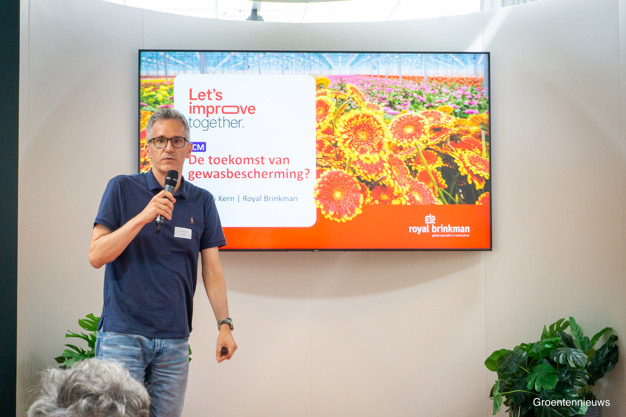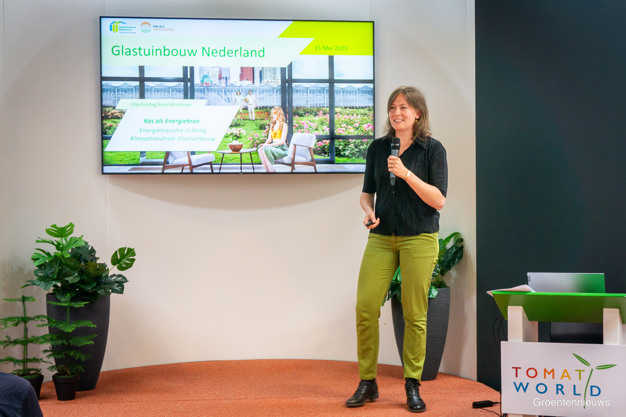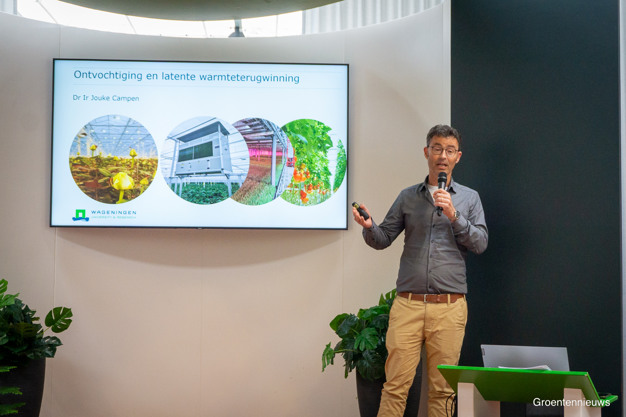Integrated pest management, which combines crop protection products with natural enemies, has long provided a balance in which growers could find answers to various diseases and pests in the greenhouse. However, due to various pressures that have resulted in fewer available products, this balance is at risk. According to Royal Brinkman, the solution lies in Integrated Crop Management. At a recent meeting in Tomatoworld, various specialists, including Thomas Kern from Royal Brinkman, discussed this approach in more detail.

Crop protection
Lily growers now need to justify the use of crop protection products rather than simply spraying chemicals, reflecting a broader shift in horticulture. Klaas Knot has highlighted the sector's challenges related to labor, energy, and the environment, while concerns about pesticide use persist, with bouquets sometimes being equated to "full of poison." The push towards pesticide-free practices is a significant topic in horticulture since restrictions began for the Dutch industry in 2019. A simulation by Glastuinbouw Nederland highlights the dwindling availability of products to combat common pests across various crops. This trend is expected to continue, with further reductions anticipated. For some crops, only integrated pest management options remain, and in floriculture, the availability of growth regulators is shrinking from limited to nearly nonexistent unless re-registration is approved.
Biocontrol agents are permitted to some extent, as Thomas Kern from Royal Brinkman highlighted during the meeting. "However, these products are mostly similar. While an industry is developing, we're not there yet," he explained. The gap that growers face is quite challenging. Pressure on crop protection products is mounting due to societal expectations, policy and regulatory demands, and decreasing product competence caused by changing cultivation systems and climatic conditions. Additionally, the retail sector is imposing stricter requirements regarding maximum residue levels (MRLs), affecting both floriculture and vegetable cultivation. "This is the reality we have to deal with," Thomas noted.
Different ways of cultivation
These developments necessitate a new approach to cultivation, which is why Royal Brinkman advocates for the transition to Integrated Crop Management, an approach that considers various factors that influence plant growth, including starting material, fertilization strategies, biostimulants, biological products, water management, and warning systems. Royal Brinkman has identified 15 domains that impact cultivation and is actively working to coordinate among specialists to ensure collaboration and support for growers. "If product X for whitefly is no longer available, and product Y is also unavailable, it's crucial to step back and view the problem holistically," Thomas explained. "How can you prevent whitefly? Are there cultivation practices, fertilization strategies, or monitoring solutions that can still prevent or address the issue?"


The afternoon session at Tomatoworld gathered insights on various methods that can contribute to sustainable cultivation. Liesanne Wieleman from Glastuinbouw Nederland discussed research focused on future cultivation in harmony with the environment. Achieving goals like circular and climate-neutral cultivation by 2040, and nearly autonomous cultivation by 2050, requires intermediate steps such as energy saving and the use of renewable energy. Resources like the Energy Monitor, research initiatives like Agros, and solutions such as Aquifer Thermal Energy Storage (ATES) with medium and high-temperature storage, all play a role in this transition. "Research is increasingly converging, with energy becoming more closely linked to plant health," she noted.
Dehumidification
Hans Belt, who is taking over the DryGair responsibilities from the departing Eef Zwinkels at Royal Brinkman, illustrated how dehumidification solutions not only provide energy savings but also enhance plant health. In integrated crop management, dehumidification and air circulation are key for climate control and mechanical prevention, as reducing humidity helps minimize fungal diseases and improve crop quality. Alongside the well-known DG12 and the smaller DG3 models, a new model is currently being tested that can dehumidify even in cold crops.

Jouke Campen from WUR had previously explained the benefits of dehumidification, demonstrating various simulations using the Greenhouse Energy Guide to illustrate the impact of energy-saving measures on specific crops and cultivation practices. "Evaporation is a significant heat demander, which, in the context of the energy transition, can be an important reason to start dehumidifying," he noted. While there are different methods available, the heat pump appears to be the most logical choice compared to hygroscopic materials. The choice and capacity of the dehumidification method are determined by the type of crop and the intensity of lighting," he explained.
Achieving a completely fossil-free operation requires significant investments, such as installing heat storage in an aquifer. However, mechanical dehumidification offers a way to make progress that not only results in energy savings but can also be financially recouped in a few years, especially considering fluctuating energy prices.
Digitization
But addressing the climate is just one part of the equation. Thomas discussed the integration of data through new solutions in cultivation. Tools like MyScout, RobCam, PATS, Scandr, ViewNetic, and Optiscout help visualize pest pressure in greenhouses and incorporate this information into cultivation strategies. This allows for the precise application of pest control, enhancing the effectiveness of pest management.
Leo van Uffelen and Sara Doelman from Koningsrust also highlighted the use of data in their presentation. They discussed a system they developed to assist growers with climate control by utilizing data from the greenhouse. The system calculates the RTR (radiation to temperature ratio) based on the temperature and radiation levels within the greenhouse. This ratio helps determine how much the temperature can rise with a given amount of light radiation. While it initially appears to be a climatic solution, it also supports Integrated Crop Management. For instance, Leo explained that pot plants can elongate if temperature and light are not properly balanced. With fewer growth inhibitors available, it's crucial to reduce the temperature when light levels are low.
The afternoon concluded with the farewell of Eef Zwinkels, who is about to retire.
